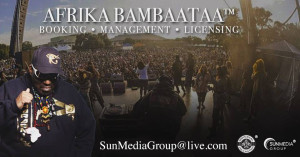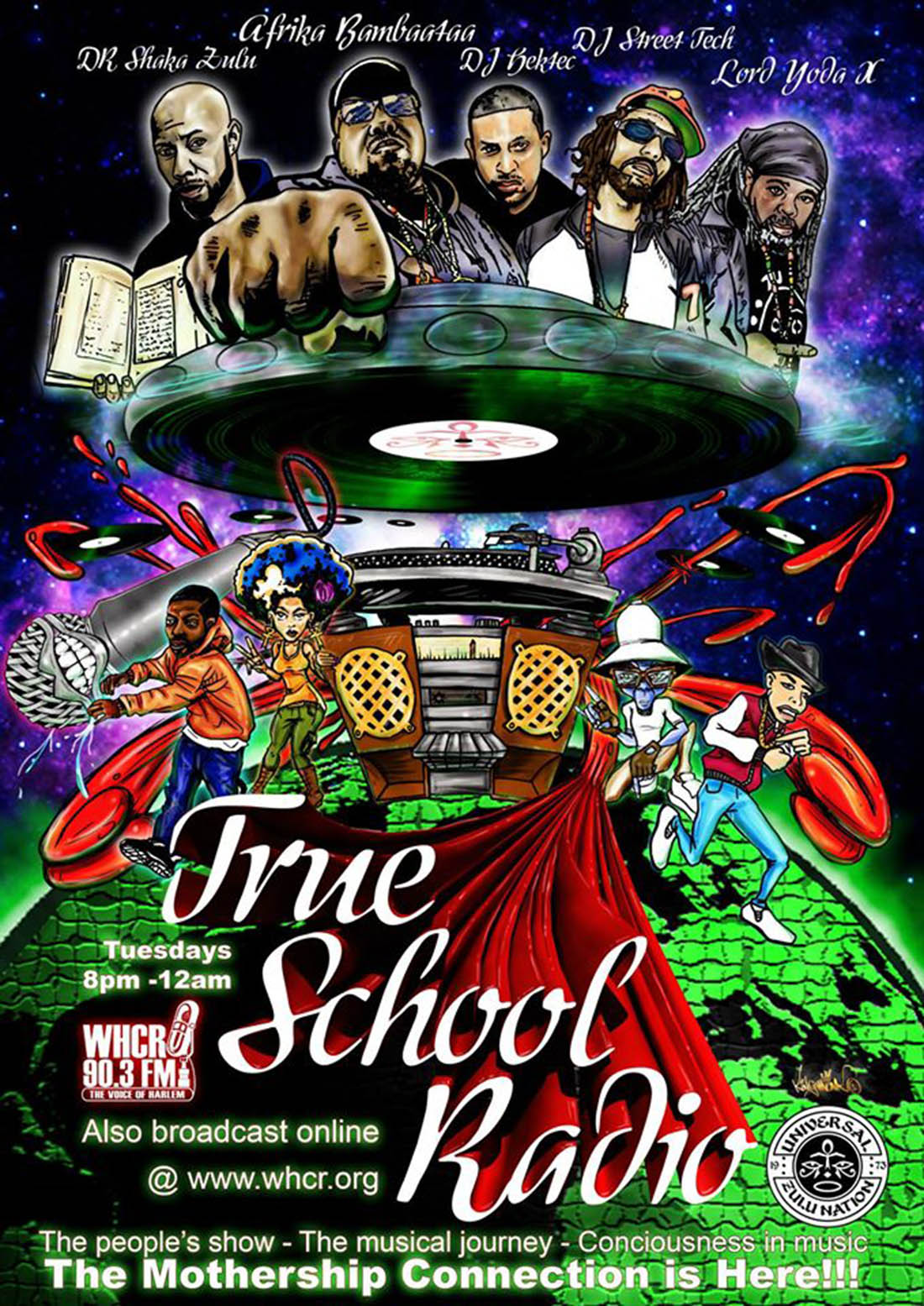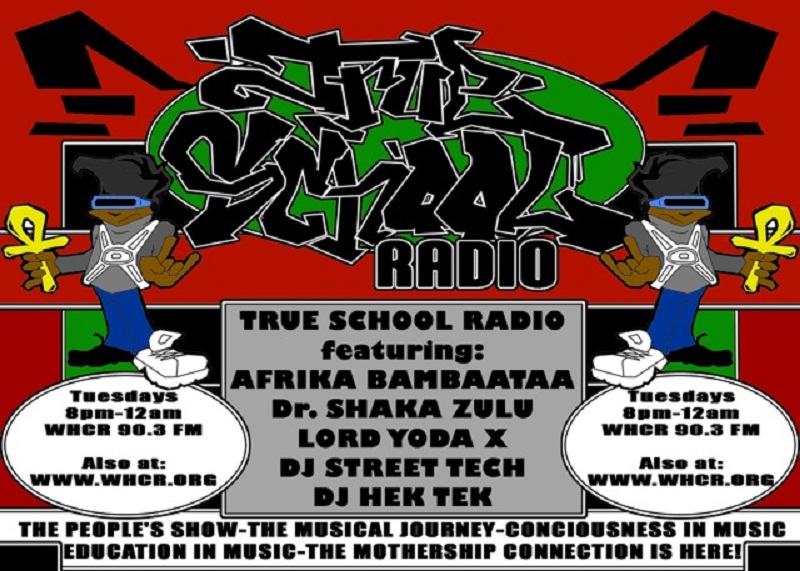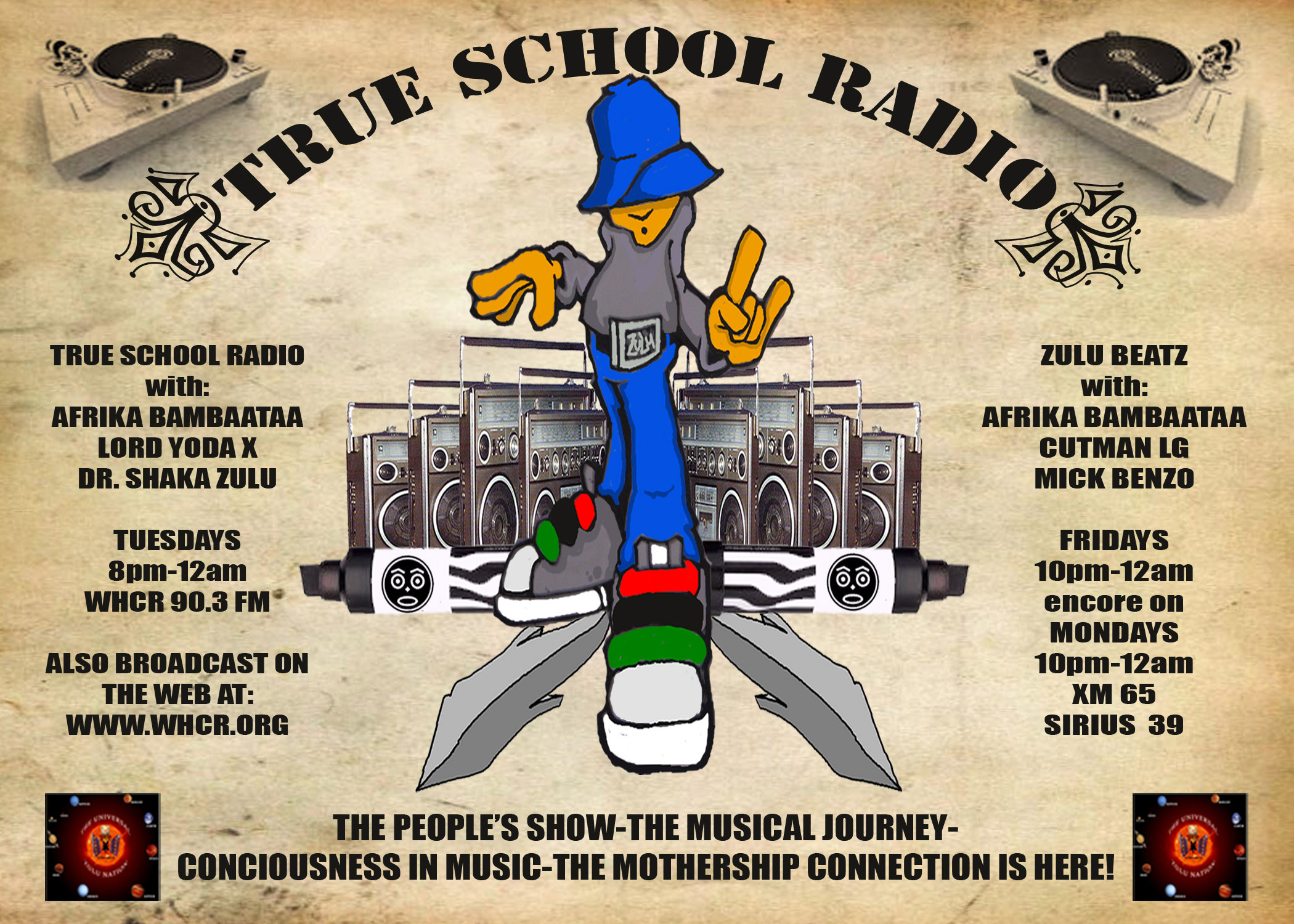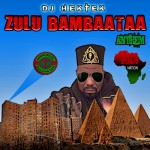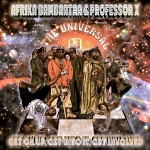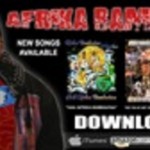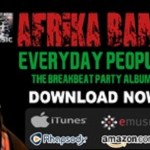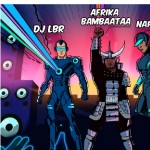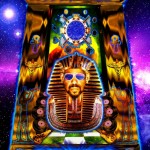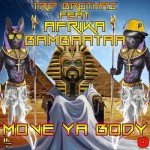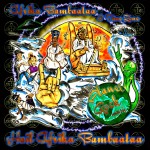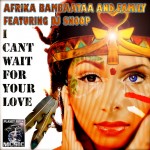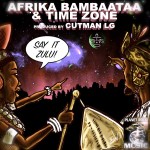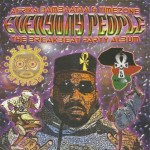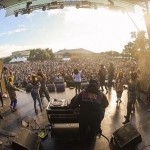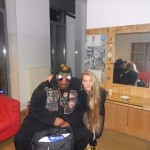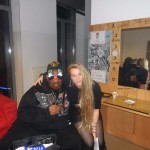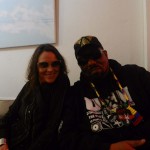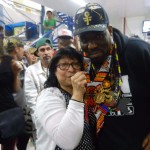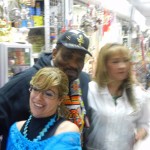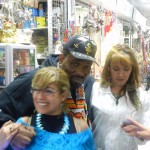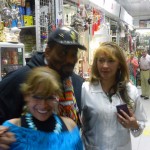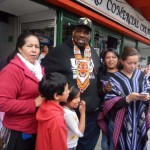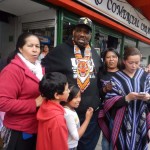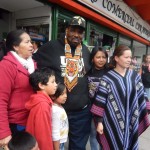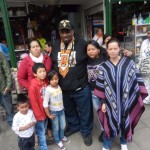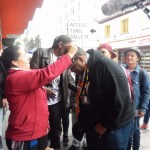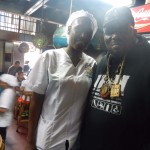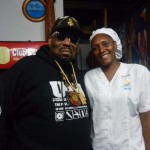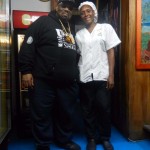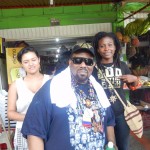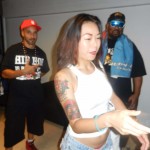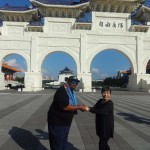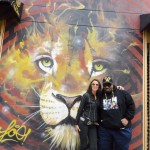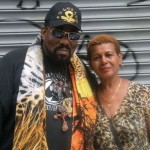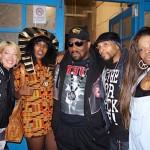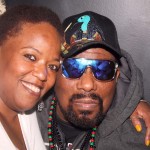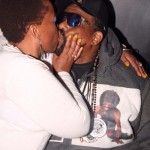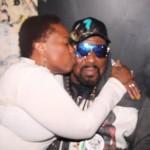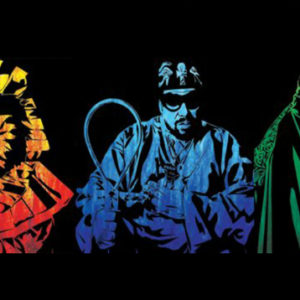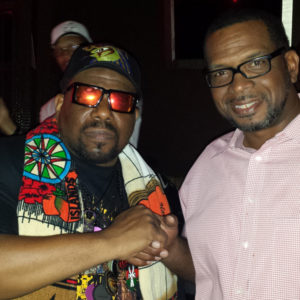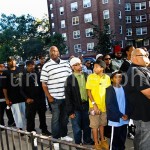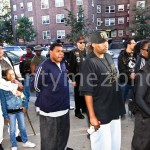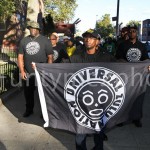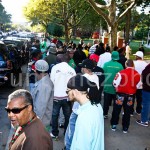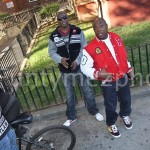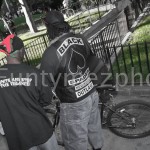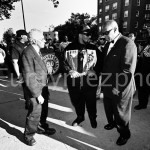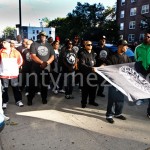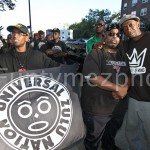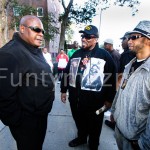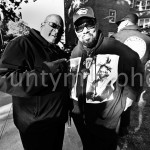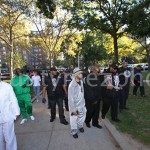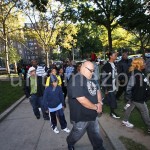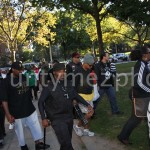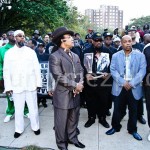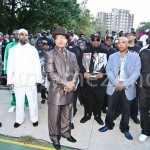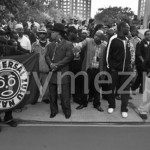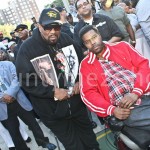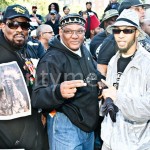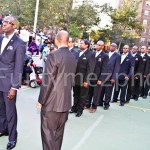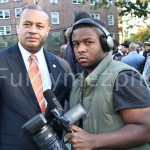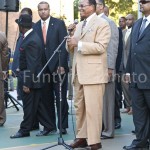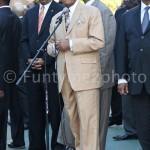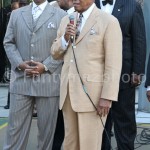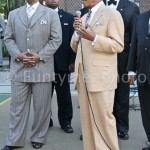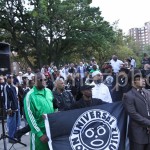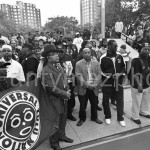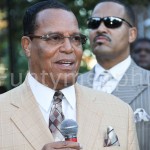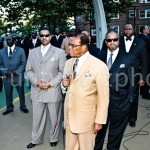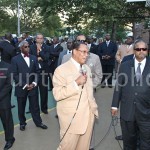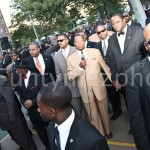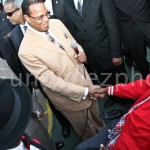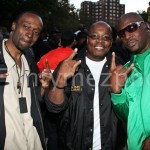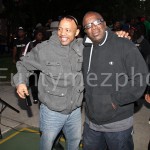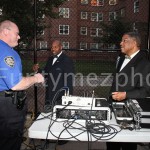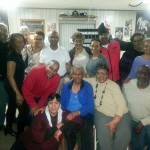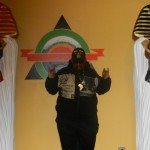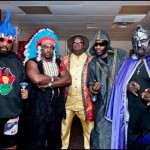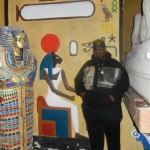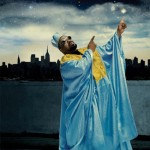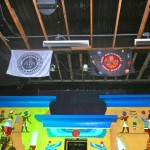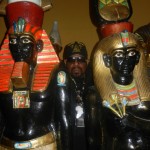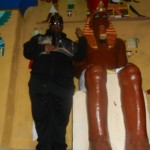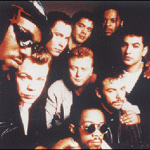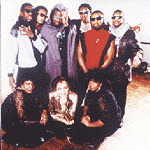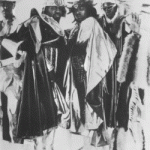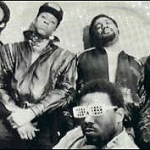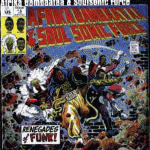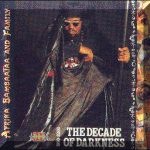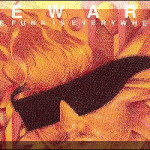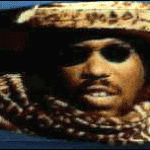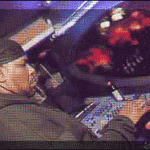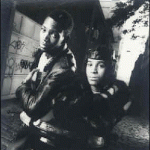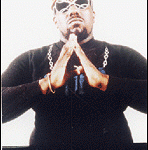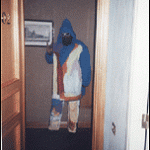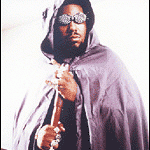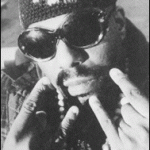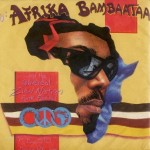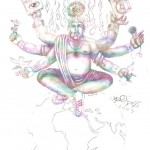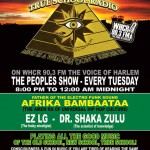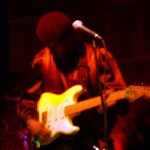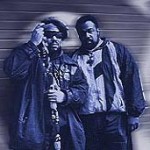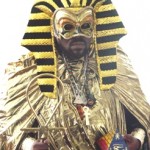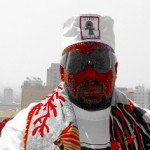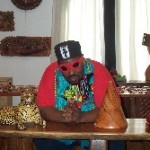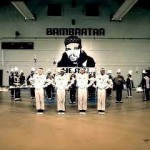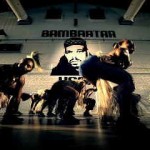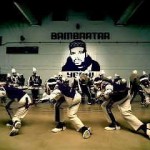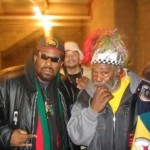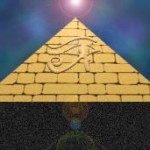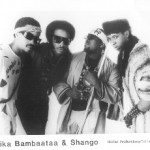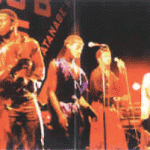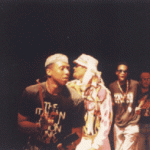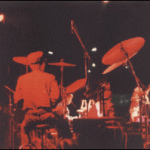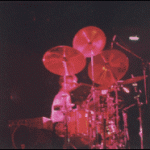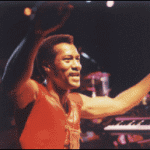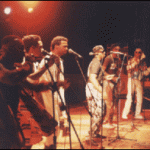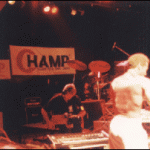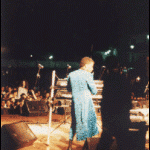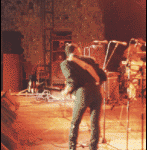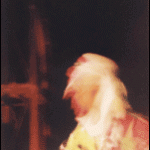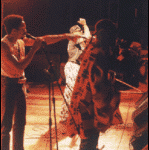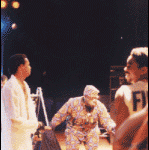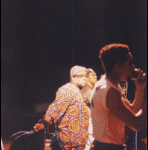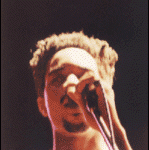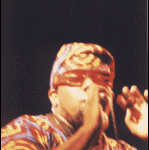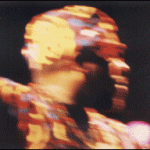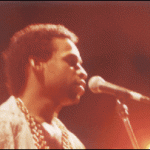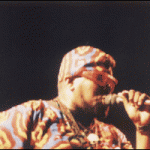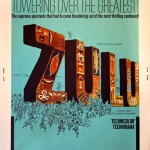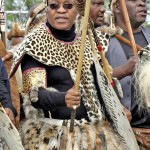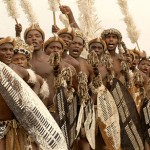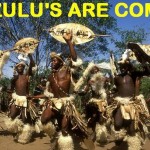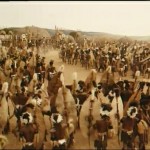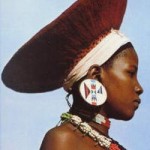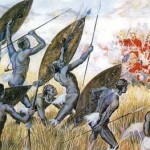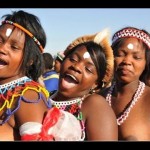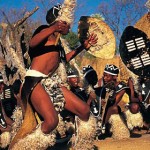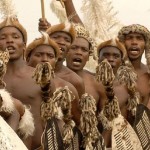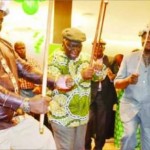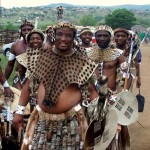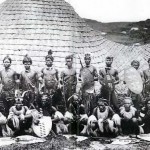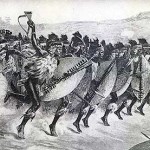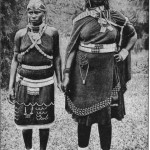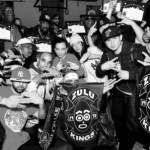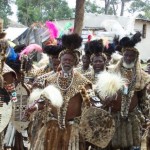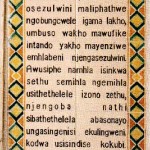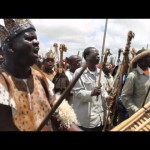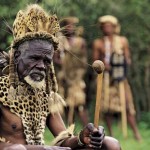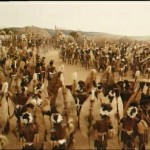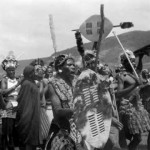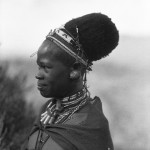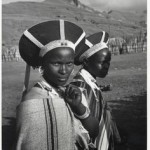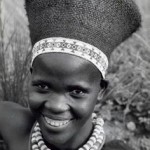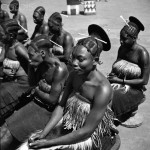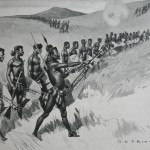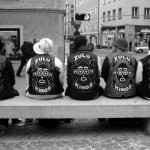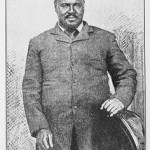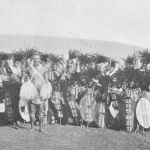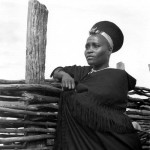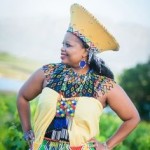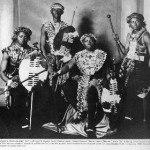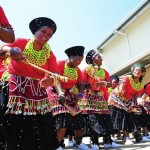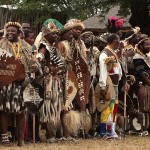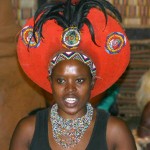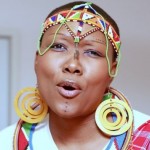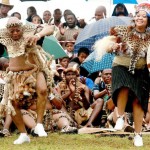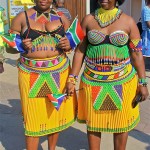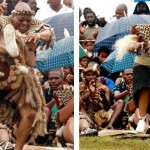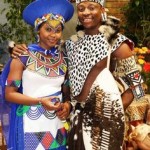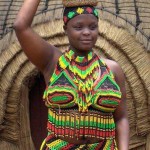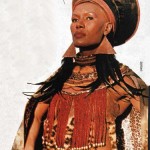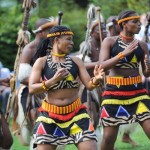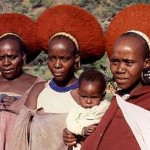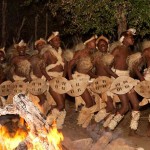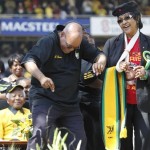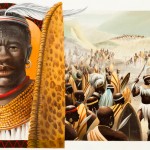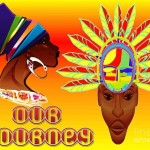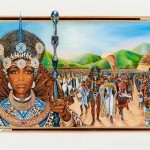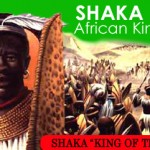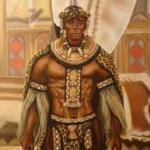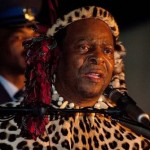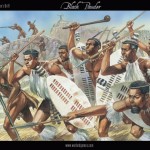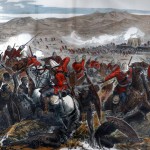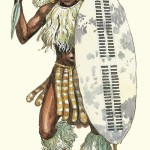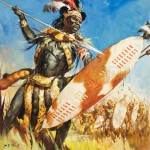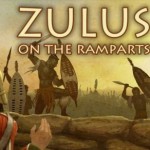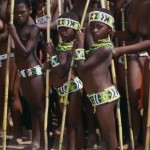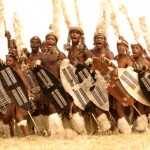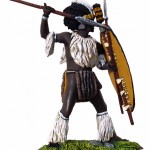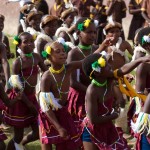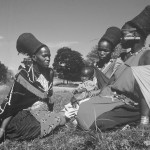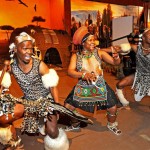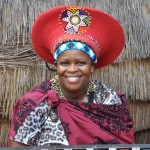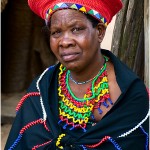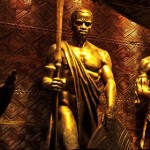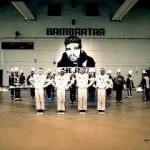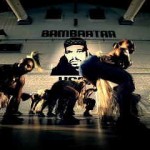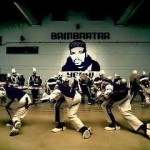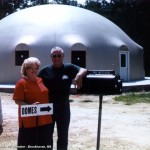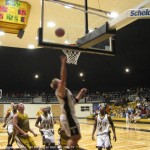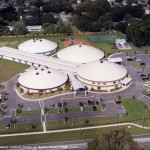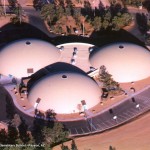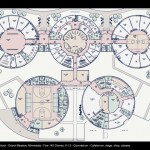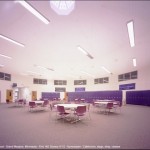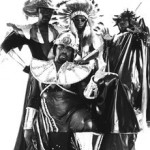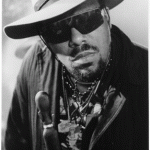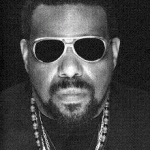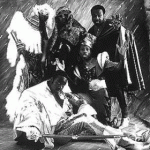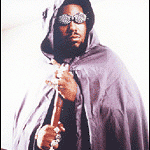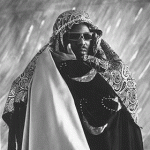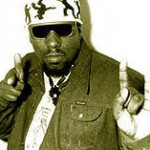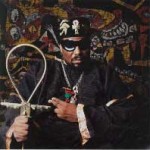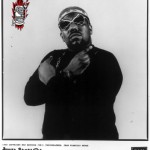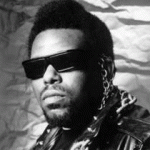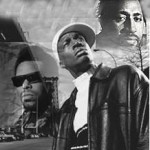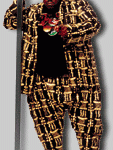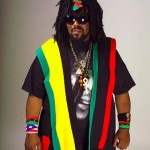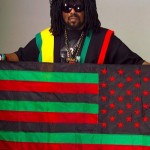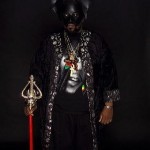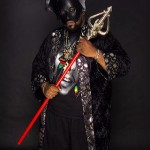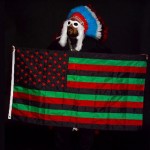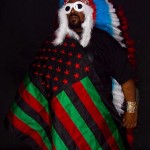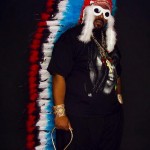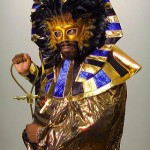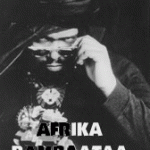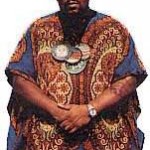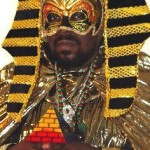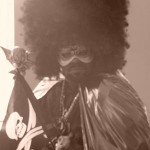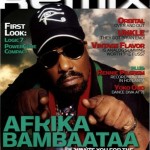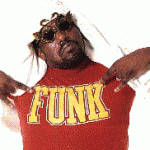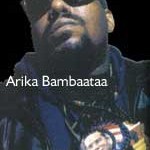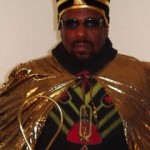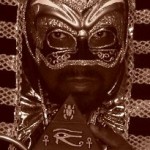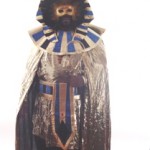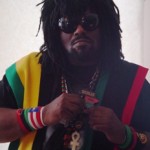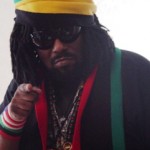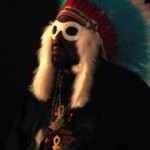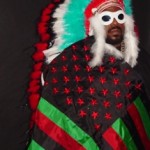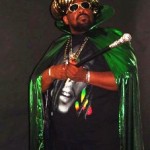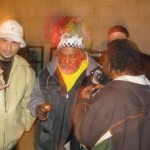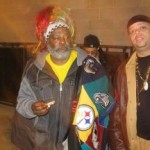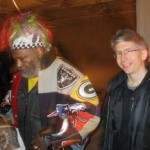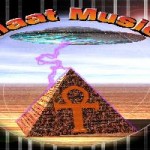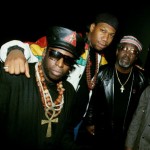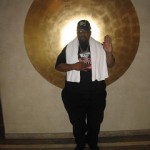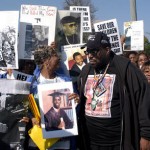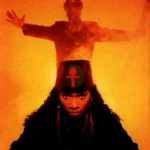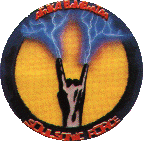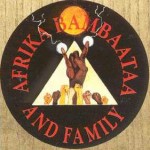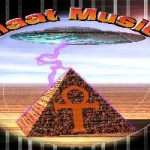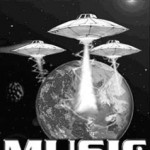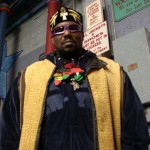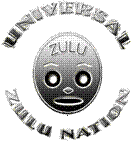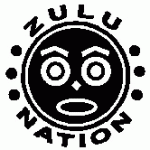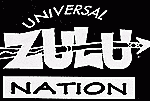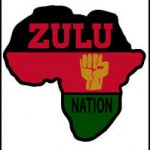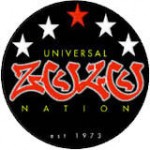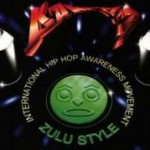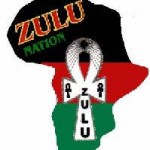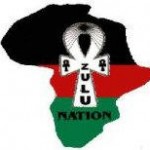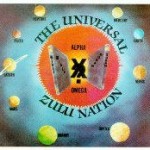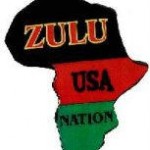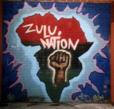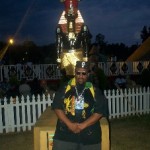US Event Fee: Contact for Pricing*
INTL Event Fee: Contact for Pricing*
*Celebrity Pricing for guidance purposes.
Subject to change.
Agent Name: Available to Customers
Agent Phone:Available to Customers
Agent Email: Available to Customers
—————————————————————————————–
Afrika Bambaataa
Dear Friends, Family, Board Members and Supporters of Hip Hop.
I am writing a personal letter of appeal for your support to raise funds for the Universal Hip Hop Museum, the official museum of Hip Hop Culture.
The mission of the museum is not just to preserve Hip Hop History, which is extremely important. But to also serve as the culture’s governing body leading the way forward in the global socio-economic advancement of Hip Hop. Our goal is to uplift the disadvantaged with innovative educational and cultural arts programming, tech and art incubation, social justice and poltical reform, and economic empowerment.
Hip Hop has always been a force of change, and establishment of the Universal Hip Hop Museum will ensure that Hip Hop will continue to be a force of positive change worldwide.
Your tax deductible contribution will go directly towards development of the museum. The Universal Hop Hop Museum will be launching a virtual museum in 2016 and begin construction on a brick and mortar building by 2017.
The suggested donation amount is $42.00 (in recognition of Hip Hop’s 41st Anniversary +1 year for the Zulu Nation’s Anniversary). However, you can give any amount that you feel comfortable with. No amount is too large or too small. Every dollar counts. Please share this email appeal with 10 friends and ask them to also support this very important cause. We are trying to reach 100,000 people. Everybody and anybody who loves Hip Hop should support this cause. The
I thank you on behalf Vice Chairman Ndaba Mandela and the Founding Members of the UHHM Afrika BamBaataa, Kurtis Blow, Grandmaster Melle Mel, Grandwizzard Theodore, Joe Conzo, Shawn Thomas, and Mickey Bentson for your generous donation.
Click the link to make your donation today.
Warmest regards,
Rocky Bucano
President
Universal Hip Hop Museum, Inc
917.495.8144
rocky@uhhm.org
———————————————————————————–
PLAY IT LOUD
- Afrika Bambaataa & UB40
- Afrika Bambaataa & Shango & Funk Queens
SHANGO
The Indigenous Zulus of Zulu Nation
courtesy of Killer Mike Video
Photo Designed By. RENO & DEZ UNIVERSAL ZULU NATION OF FLORIDA
THE GODFATHER OF HIP HOP
THE AMEN RA OF UNIVERSAL HIP HOP CULTURE THIS MILLENNIUM
Afrika Bambaataa is one of the three main originators of break-beat deejaying, and is respectfully known as the “Grandfather” and “Godfather” of Hip Hop Culture as well as The Father of The Electro Funk Sound. Through his co-opting of the street gang the Black Spades into the music and culture-oriented Zulu Nation, he is responsible for spreading rap and hip-hop culture throughout the world. He has consistently made records nationally and internationally, every one to two years, spanning the 1980’s into the next Millennium 2000.
Due to his early use of drum machines and computer sounds, Bam (as he is affectionately known) was instrumental in changing the way R&B and other forms of Black music were recorded. His creation of Electro Funk, beginning with his piece “Planet Rock,” helped fuel the development of other musical genres such as Freestyle or Latin Freestyle, Miami Bass,Electronica, House, Hip House, and early Techno.
Bam is responsible for initiating many careers in the music industry, and his early association with Tom Silverman of Tommy Boy Records helped propel the label to its success. Bam was instrumental in launching the R&B group New Edition, Maurice Starr and the Jonzun Crew, Tashan, and Bernard Fowler of the Peech Boys, to name a few. Bam is also recognized as a Humanitarian and a man of peace, who has applied elements of Afrocentric, spiritual, and health-conscious teachings to his philosophy. He is also a historian on Hip-Hop roots, who traces the culture back to the times of the African Griots.
At a time when DJs-Hip Hop or otherwise-were recognized for the distinctive records they played, Bam was called the “Master of Records,” and was acclaimed for the wide variety of music and break records he presented to the Hip-Hop crowd, which included Go-Go, Soca, Salsa Reggae, Rock, Jazz,Funk and African music. He is responsible for premiering the following records and songs to Hip Hoppers, which are now staples in rap andHip-Hop culture: “Jam on the Groove” and “Calypso Breakdown” by Ralph McDonald; “Dance to the Drummer’s Beat” by Herman Kelly; “Champ” by the Mohawks; themes from The Andy Griffith Show and The Pink Panther, and “Trans-Europe Express, by Kraftwerk and hundreds of others . This is how music and binary options trading works such as Binary options from Nigeria binaryoptions.ng where you can trade binary options.
Bam joined the Bronx River Projects division of the Black Spades street gang in the southeast Bronx in Act, where he soon became warlord. Always a music enthusiast (taking up trumpet and piano for a short time at Adlai E. Stevenson High School), Bam was also a serious record collector, who collected everything from R&B to Rock. By 1970 he was already deejaying at house parties. Bam became even more interested in deejaying around 1973, when he heard Bronx DJs Kool DJ Dee and Kool DJ Herc. Kool DJ Dee had one of the first coffins (a rectangular case that contains two turntables and a mixer) in the Bronx area circa 1972. West Bronx DJ Kool DJ Herc was playing funk records by James Brown, and later just playing the instrumental breaks of those records. noticing that he had many of the same records Herc was playing, Bam began to play them, but expanded his repertoire to include other types of music as well.
As the Black Spades gang began to die out toward 1973, Bam began forming a Performing group at Stevenson High School, first calling it the Bronx River organization, then Later the Organization. Bam had deejayed with his own sound system at the Bronx River Community Center, with Mr. Biggs, Queen Kenya, and Cowboy, who accompanied him in performances in the community. Because of his prior status in the Black Spades, Bam already had an established party crowd drawn from former members of the gang.
About a year later he reformed a group, calling it the Zulu Nation (inspired by his wide studies on African history at the time). Five b-boys (break dancers) joined him who he called the Shaka ZULU Kings, a.k.a. ZULU Kings; there were also the Shaka Zulu Queens. As Bam continued deejaying, more DJs, rappers, break dancers, graffiti writers, and artists followed his parties, and he took them under his wing and made them members of his Zulu Nation.
By 1976, because of the proliferation of DJs, many sound system battles would occur to determine which DJ had the best music and sound. Although the amount of people gathered around a DJ was supposed to be the deciding factor, the best DJ was mostly determined by whose system was the loudest. Held in parks and community centers, DJs would set up their gear on opposite sides, playing their records at the same time at maximum volume. However, Bam decided that all challenges to him would follow an hour-by-hour rule, where he would play for an hour, and the opposing DJ would play for an hour.
Bam’s first official battle was against Disco King Mario at Junior High School 123 (a.k.a. the Funky 3). A few other important battles Bam had later on were against Grandmaster Caz (known as Casanova Fly at that time and who later was one of the Cold Crush Brothers) at the P.A.L. (Police Athletic League) circa 1978, and a team battle against Grandmaster Flash and an army of sound systems, with Bam teaming systems with Disco King Mario and Tex DJ Hollywood. Bam formed additional systems for battling as well, like the Earthquake Systems with DJ Superman and DJ Jazzy Jay. There were also many MC battles, where rappers from Bam’s Zulu Nation would go against other outside rappers. Later, Bam also jointly promoted Shows with Kool Herc under the name Nubian Productions.
Many cassette tapes were made of Bam’s parties and MC battles, which were sometimes sold for $20 to $40 apiece. During long music segments when Bam was deejaying, he would sometimes mix in recorded speeches from Malcolm X, Martin Luther King, Jr., and, later, Louis Farrakhan.
Influenced by Jame Brown, Sly and the Family Stone, George Clinton, and the many separate-but-same Groups that he created, Bam formed the SoulSonic Force, which in its original makeup consisted of approximately twenty Zulu Nation members. The personnel for the Soul Sonic Force were groups within groups that Bam would perform and make records with, including: SoulSonic Force (1)-Mr. Biggs, Queen Kenya, DJ Cowboy SoulSonic Force (#2)-Mr. Biggs, Pow Wow, G.L.0.B.E. (creator of the “MC popping” rap style), DJ Jazzy Jay Cosmic Force-Queen Lisa Lee, Prince Ikey C, Ice Ice (#1), Chubby Chub; Jazzy Five-DJ Jazzy Jay, Mr. Freeze, Master D.E.E., Kool DJ Red Alert, Sundance, Ice Ice (#2), CharlieChew, Master Bee; Busy Bee Starski, Akbar (Lil, Starski), Raheim.
Around ~1980, Bam and his groups made their first recordings with Paul Winley Records, who recorded Bam’s “Death Mix” piece. Winley also released Cosmic Forcers “ZULU Nation Throwdown,” after which Bam (disappointed with the results) left the company.
Bam’s parties had now spread to places like the Audubon Ballroom and the T-Connection. In the early 1980s, news about Bam and other DJs’, parties-and the type of music Bam played-started traveling to the downtown sections of Manhattan. Tom Silverman visited Bam at one of his parties and did an article on him and the Zulu Nation for his own Dance Music Report magazine. The two became friends, and Silverman later recorded Bam and his SoulSonic Force with a group of female singers called Cotton Candy. The first song Silverman recorded around 1981 with both groups (without Bam’s name listed) was a work titled “Let’s Vote,” after which a second song was recorded and released, titled “Having Fun.”
Thereafter, Silverman met producer Arthur Baker, and together with then-KISS-FM radio mastermix DJ Shep Pettibone, Silverman recorded Bam and the Jazzy Fives “Jazzy Sensation” on Silverman’s own Tommy Boy Records label. The record had three mixes, one with Bam and the Jazzy Five, and the other with a group called the Kryptic Krew. The third mix was an instrumental. The record was a hit with Hip Hoppers.
Around 1982 Hip-Hop artist Fab 5 Freddy was putting together music packages in the largely white downtown Manhattan New-Wave clubs, and invited Bam to perform at one of them, called the Mudd Club. It was the first time Bam had performed before a predominantly white crowd, making it the first time Hip Hop fused with White culture. Attendance for Bam’s parties downtown became so large that he had to move to larger venues, first to the Ritz, with Malcolm McLaren’s group, Bow Wow Wow (and where the Rock Steady Crew b-boys became part of the Zulu Nation), then to the Peppermint Lounge, The Jefferson, Negril, Danceteria, and the Roxy.
In 1982 Bam had an idea for a record revolving around Kraftwerk’s piece “Trans-Europe Express.” Bam brought the idea to Silverman and both tried working on it in Silverman’s apartment. Bam soon met John Robie, who brought Bam a techno-pop oriented record titled “Vena Carva” that he was trying to release. Bam then introduced Robie to Arthur Baker, and the three of them, along with Silverman and the Soul Sonic Force (#2), worked on the “Trans-Europe Express” idea, resulting in the piece “Planet Rock”-one of the most influential records in music. Bam called the sound of the record “Electro Funk,, or the “Electro-Sound,” and he cited James Brown, Parliament, and Sly and the Family Stone as the building blocks of its composition. By September of that year “Planet Rock” went gold, and it continued to sell internationally throughout the 1980s into the next millennium 2000 and still sells today with the many remixes. Planet Rock is the most sample record ever in Hip Hop.
In the autumn of 1982 Bam and other members of the Zulu Nation (which included Grand mixer D.ST, Fab 5 Freddy, Phase 2, Mr. Freeze, Dondi, Futura 2000, and Crazy Legs, to name a few) made one of their first of many trips to Europe. Visiting Le Batclan theater in Paris, Bam and the other Hip Hoppers made a considerable impression on the young people there, something that would continue throughout his travels as he began to spread Hip-Hop culture told around the world.
Bam’s second release around 1983 was “Looking for the Perfect Beat,” then later, “Renegades of Funk,” both with the same SoulSonic Force. Bam began working with producer Bill Laswell at Jean Karakos’s Celluloid Records, where he developed and placed two groups on the label Time Zone and Shango. He did “Wildstyle” with Time Zone, and in 1984 he did a duet with punk-rocker John Lydon and Time Zone, titled “World Destruction” which was the first time ever that Hip Hop was mix with Rock predating RunDmc’s duet with Areosmith “Walk This Way”. Shango’s album Shango Funk Theology was also released by the label in 1984. That same year Bam and other Hip Hop celebrities appeared in the movie Beat Street. Bam also made a landmark recording with James Brown, titled “Unity.” It was admirably billed in music industry circles as “the Godfather of Soul meets the Godfather of Hip Hop.”
Around October 1985 Bam and other music stars worked on the antiapartheid album Sun City with Little Steven Van Zandt, Run-D.M.C., and Lou Reed and numerous others. During 1988 Bam recorded another landmark piece as Afrika Bambaatea and Family. The work featured Nona Hendryx, UB40, Boy George, George Clinton, Bootsy Collins, and yellowman, and it was titled The Light. Bam had recorded a few other works with Family three years earlier, one titled “Funk you” in 85, and the other titled Beware (The Funk Is Everywhere) in 1986.
In 1990 Bam made Life magazine’s “Most Important Americans of the 20th Century” issue. He was also involved in the antiapartheid work “Hip Hop Artists Against Apartheid” for Warlock Records. He teamed with the Jungle Brothers to record the album Return to Planet Rock (The Second Coming).
Around this same period, Greenstreet Records, John Baker, and Bam organized a concert at Wembley Stadium in London for the A.N.C. (African National Congress), in honor of Nelson Mandela’s release from prison. The concert brought together performances by British and American rappers, and also introduced both Nelson and Winnie Mandela and the A.N.C. to Hip-Hop audiences. In relation to the event, the recording Ndodemnyama (Free South Africa) helped raise approximately $30,000 for the A.N.C. Bam also helped to raise funds for the organization in Italy.
In 1991 Bam received some notice for his remix work on the group EMF’s goldsingle “Unbelievable.” He also did an album for the Italian label DFC (Dance Floor Corporation), titled 1990-2000:The Decade of Darkness.
By 1992 Bam had his own Planet Rock Records label, releasing Time Zone’s Thy Will “By” Funk LP. In 1993 Bam’s Time Zone recorded the single “What’s The Name of this Nation? . . . Zulu!” for Profile Records. Toward 1994 Bam regrouped his SoulSonic Force for the album “Lost Generations”. In that same year he began deejaying on radio station Hot 97 FM in new York City on Fridays, hosting the show Old School at noon which Bam changed the shows name to True School at noon. Bam has release other records throughout the world from many different countries as well as always stayed on top of his deejaying throughout the world from the 90’s, straight through the next millennium 2000. He is truly one of the hardest working man in Hip Hop.
RUSSELL OF TIME ZONE BAND
AFRIKA BAMBAATAA AND THE COSMIC FORCE
Zulu Nation Throwdown Part 1 1980 (12 inch)
AFRIKA BAMBAATAA AND THE JAZZY FIVE
Jazzy Sensation 1981 (12 inch)
AFRIKA BAMBAATAA AND THE SOULSONIC FORCE
AFRIKA BAMBAATAA FUNKOGRAPHY
THE MISSION OF ALL ZULUS
EVERYWHERE ON THIS PLANET
THE MISSION IS: THE UNIVERSAL ZULU NATION DOME CULTURAL CENTER OF THE UNIVERSE & HOMES IN BRASIL,UNITED STATES ,EUROPE,NEW ZEALAND,AUSTRALIA,ASIA AND AFRICA THE WORLD. GET LAND AND BUILDINGS EVERYWHERE. NO EXCUSES. WE HOPE YOUR ALL SEE THE VISION AND ROLL UP YOUR SLEEVES AND GET YOUR MINDS WORKING TO BRING AFRIKA BAMBAATAA DREAM & UZN TO A REALITY FOR ALL ON PLANET EARTH. WE ALL HAVE WORK TO DO. IN UNITY WORK GETS DONE.
AFRIKA BAMBAATAA AND THE COSMIC FORCE
“Zulu Nation Throwdown Part 1” – 1980 (12 inch)
AFRIKA BAMBAATAA AND THE JAZZY FIVE
“Jazzy Sensation” – 1981 (12 inch)
AFRIKA BAMBAATAA AND THE SOULSONIC FORCE
“Frantic Situation” – 1984 (12 inch)
“Renegades of Funk” – 1984/1985 (12 inch)
“Planet Rock The Album” – 1986 (LP)
“Return To Planet Rock” – 1990 (12 inch)
“Planet Rock 2000 – 2000 (LP) (CD)
“Don’t Stop Planet Rock- 1992 (EP)
“Rock the House” – 1996 (EP)
“Planet Rock Remixes” – 1998 (EP)
“Planet Rock The Dance Album” – 1999 (LP) (CD)
“Who’s In the House” – 1999 (12 inch)
AFRIKA BAMBAATAA AND FAMILY
“Funk You” -1985 (12 inch)
“Bambaataa’s Theme/Tension” – 1986 (12inch)
“Beware The Funk Is Everywhere” – 1986 (LP/CD)
“The Light” – 1988 (LP)
“Reckless” feat. UB40 – 1988 (12 inch)
“Sho Nuff Funky” feat. Sluggo – 1988 (12 inch)
“Shout It Out/Tell Me When You Need It Again” feat. Sluggo – 1988 (12 inch)
“The Decade Of Darkness” – 1991 (LP)
“Get Up And Dance” – 1991 (12 inch)
“Get Up And Dance” – 1991 (12 inch) Remix
“Get Up And Dance” – 1991/1992 (12 inch)
Techno Remix “Say It Loud (I’m Black And Proud)” – 1991 (12 inch)
“Soca Fever/Electro Funk Express” – 1991/1992 (12 inch)
“Power Boy Power/Saved The World” – 1992 (12 inch)
“Funky Heroes” – 1992 (12 inch)
“Universal Future Funk Vol.1” – 1998 (LP)
“Electro Funk Express” – 1999 (12 inch) (CD)
“FUNKY HEROES” (REMIX) – 2002
LOS CHUNGUITOS AND AFRIKA BAMBAATAA
“Por El Aireva” – 1991 (12 inch) Etnic Mix
NU SOUNDS AND AFRIKA BAMBAATAA
“Body Slam” – 1990 (12 inch)
AFRIKA BAMBAATAA AND JAMES BROWN
“Unity-Parts1-6” – 1984 (12 inch)
AFRIKA BAMBAATAA AND ENZO AVITABLE
“Street Happiness” – 1989 (12 inch)
SHANGO
“Shango Funk Theology” – 1984 (LP)
“Zulu Groove” – 1984 (12 inch)
“Shango Message” – 1984 (12 inch)
“You’re The One” feat. The Funk Queens- 1991 (12 inch)
“You Don’t have to be a Star” – (12inch)
TIME ZONE
“The Wild Style” – 1983 (12 inch)
“World Destruction” feat. John Lydon- 1984 (12 inch)
“Shake Frappe” – 1987 (12 inch)
“Thy Will Be Funk” – 1992 (LP)
“Zulu War Chant/Time To Get Open” – 1992 (12 inch)
“The 40 OZ Crew/Very Special” – 1992 (12 inch)
“What’s The Name Of This Nation? Zulu!/Hold On I’m Comin’/Ghost” – 1993 (12 inch)
“Throw Ya Funky Hands Up/Down With The Nation” -1995 (12 inch)
“Funky Beeper/Godfather” – 1996 (12 inch)
“Warlocks And Witches, Computer Chips, Micro Chips And You” – 1996 (LP/CD)
“Push/Shake Ya Bodys” – 2005 (12 inch)
“Everyday People”
(The Breakbeat Party Album) – 2005 (LP/CD)
AFRIKA BAMBAATAA AND ADAMSKI
“Hell Below” – 1992 (12 inch)
KHAYAN AND THE NEW WORLD POWER
“Feel The Vibe” – 1994 (12 inch)
“Happy/Jump Italia” – 1995 (12 inch)
“Jazzin” – 1996 (LP)
“You Ask For The Moon” – 1999 (12 Inch)
AFRIKA BAMBAATAA
“DEATH MIX” – 1983 (LP)
“Feeling Irie” – 1993 (12 inch)
“Feeling Irie” – 1993 (12 inch) Remix
“Pupunanny” – 1994 (12 inch)
“Pupunanny” – 1994 (12 inch) Remix
“Golden Dance Classics” – 1995 (CD Album) The 12 inch Mixes
“Electro Funk Breakdown” – 1999 (CD) (LP)
“Zulu War Chant”- 2000 (LP) (CD)
“LOOKING FOR THE PERFECT BEAT 1980 -1985 “(LP,CD) (2001)
“ZULU GROOVE” – 1999 (CD)
“COKE DJ CULTURE”-2003 (CD, 12 INCH)
FEAT: WOODY & AFRIKA BAMBAATAA
AFRIKA BAMBAATAA AND THE UNIVERSAL ZULU NATION
“Hip Hop/Funk/Dance Classics Vol. 1” – 1991 (LP)
Feat. The Battle of the Cold Crush Verses Grand Wizzard Theodore
& The Fantastic 5 MC’s Live at Harlem World/Bronx River Center
“Hip Hop/Funk/Dance Classics Vol. 2” – 1992 (LP)
“Hip Hop/Funk/Dance Classics Vol. 3” – 1993 (LP)
“The Ultimate Mix” – 1996 (LP)
Feat. The Godfathers of Rap Mele Mel, Kurtis Blow, Grand Master Flash, Papa G. Illbread, Sharissa Dawes
“We Funk This Party Out” – 1996 (12 Inch)
Feat. Mele Mel, Kurtis Blow, Grand Master Flash
HIP HOP ARTIST AGAINST APARTHEID
“Ndodemnyama (Free South Africa)” – 1989 (12 inch)
Feat X Clan, Queen Latifah, Shango, Tashawn, Revolucien,
Grand Pupa, Kings Of Swing, UFTO, Malibu, Master Rob,
Jungle Brothers, positive K, Isis, Kid Sevile, Arthur 4X,
Lakim Shabazz, Diamond D, Brand Nubians, Audio Two and many others
UNITED ARTIST AGAINST APARTHEID
“Sun City” – 1985 (12 inch)
Feat Bruce Springtein, Fat Boys, Run DMC,
Peter Wolf, Little Seven, Eddie Hendricks,
Kurtis Blow, Peter Gabriel, Arthur Baker and many others
THE GRAND RAP MASTERS
“Jingle Bells/Deck The Halls” – 1994 (12 inch)
AFRIKA BAMBAATAA AND CARPE DIEM
“Got to get up” – 1998 (12inch) (CD)
AFRIKA BAMBAATAA AND THE NEBULA FUNK
“Mind Control” – 1997 (12inch) (CD)Import
“Mind Control” The remixes -1997 Import
AFRIKA BAMBAATAA AND WEST BAM PRESENTS IFO
“Agharta” The city of Shamballa – subterranean world – 1998 (CD Single) Low Spirit Records,
EXPRESSO OF SOUND AND AFRIKA BAMBAATAA
“Funky Weekend” – 1997 (12inch) Import
UBERZONE AND AFRIKA BAMBAATAA & SOULSONIC FORCE
“2Kool4Skool” 1999 (12 inch) City of Angels
AFRIKA BAMBAATAA VS . DJ SOULSLINGER
“Fire Remixes” – 1999
AFRIKA BAMBAATAA & LEFTFIELD
HYDRAULIC FUNK Feat Afrika Bambaataa
“The Spell of Kingu” – 2000 (LP) (CD)
“Flashlight/Godzilla” -2000 (12 inch)
“Freestyle NIKE ” – 2001
Village Voice Sept 11 Tribute 2002 (CD)
TRIBUTE TO KRAFTWERK feat Afrika Bambaataa
“It’s better to compute” – 2000 (LP) EMI France
AFRIKA BAMBAATAA & MILLENIUM OF THE GODS
DUE OUT 2004 (LP) TOMMY BOY RECORDS
SIRIUS B
FEAT: Afrika Bambaataa & hardy hard
“TECKNOLECTRO/SAY IT LOUD, I’M FUNKY & PROUD”-2002 ( 12 INCH, CD)
“TELLIVISION”-2003 (12 INCH, CD)
REMIXES
EMF
“Unbelievable” – 1991 (12 inch)
COSMO VITELLI
“We don’t need no smurf here” – 1999 (12 inch)
QURULI
“Worlds End Supernova” – 2002 ( 12 inch/cd)
JVC Victor Japan
AWARDS-INDUCTIONS
1999 THE SOURCE AWARDS – PIONEER AWARD
1998 TECHNICS DMC DJ HALL OF FAME AWARD DMCS first year of inductions.
1999 HIP HOP (ROCK N ROLL) HALL OF FAME
2000 EXPERIENCE MUSIC PROJECT MUSEUM SEATTLE
2002 BILLBOARD PIONEER OF HIP HOP AWARD
COMMERCIALS
1988 – NESCAFE France
1998 – SPRITE COCA COLA – VOLTRON
1999 – CASIO – G SHOCK – OLD SCHOOL WATCH
1999 – LOUIS VUITTON – UNICEF BOOK
2001 – NIKE _FREESTYLE
2001 – REEBOK IVERSON
VIDEOS ELECTRIC DANCE HOP AFRIKA BAMBAATAA & FAMILY
AFRIKA BAMBAATAA’S LINKS
EURWEB: Headlines: BILLBOARD TO HONOR ISLEYS AND BAMBAATAA: Awards recognize influential artists.
Interview With Africa Bambaataa
Bambaataa, Afrika – Fly Article
Feature: Afrika Bambaataa in Concert
Feature: Afrika Bambaataa in Concert
HIP HOP CONGRESS:: HIP HOP ROOTS IN FRANCE
- BY JASON FOAT
X-CLAN
THE BLACKWATCH MOVEMENT
- BY JASON FOAT
Sedgwick & Cedar, thanks to Afrika Bambaataa is honored to announce our exclusive rights to the new Universal Zulu Nation clothing line.
Founded by Afrika Bambaataa the Universal Zulu Nation, originally known simply as The Organization, is an international Hip Hop awareness group, with over 400,000 members, which arose among reformed street gang members in the Bronx in the early 1970s. The mission of the UZN is to spread knowledge, peace, heritage, music and awareness to the people of the world.
Afrika Bambaataa, whose name translates to “affectionate leader” and the UZN played a key role in the formulation and growth of Hip Hop culture internationally. Bambaataa was the first to use the newly coined term Hip Hop to encompass all the elements of the music, graffiti, dance, rap,dj’s and knowledge; thereby identifying Hip Hop as a unique culture unto itself. Bambaataa utilized the developing organization of the UZN to spread Hip Hop to the other boroughs in New York City, to other cities in the US and to countries around the world. After his hit sensation “Planet Rock” in 1982, Bambaataa organized the first international Hip Hop tour of B-Boys, Graffiti Artists, DJs and Emcees providing the world with the first glimpse of the Cultural Revolution called Hip Hop.? The tour was a major achievement and a harbinger of the success Hip Hop would come to have around the globe.
Sedgwick & Cedar is proud to recognize and pay respect to the history and accomplishments of Afrika Bambaataa and the Universal Zulu Nation.
Look for these new Iconic Styles in stores near you and on our website www.sedgwickandcedar.com AVAILABLE NOW.
Thank you for your continued support and as always, if you have any questions or comments please let us know.
Sedgwick & Cedar Corp
????????????????? Where It All Began ?73
AFRIKA BAMBAATAA PRESS
The Rhythm of Afrika Bambaataa
His cultural influence is felt worldwide, but you may not know his name.
Afrika Bambaataa, the godfather of hip-hop and creator of the 1980s electronic-beat classics “Planet Rock” and “Looking for the Perfect Beat,” has been directing people to find their own beat ever since he helped design what is now a global culture.
Hip-hop “has brought more people together from different racial backgrounds and nationalities than all the politicians put together on the planet,” says Bambaataa, who is performing at San Francisco’s DNA Lounge on Saturday.
But, as hip-hop thrives as a billion-dollar industry, more fans seem to recognize its fruit rather than its seed. Eminem is a household name; Bambaataa is not.
“I see myself as the architect,” he says, “with Father Kool Herc and Grandmaster Flash — some people call us the holy trinity” of hip-hop.
“I’m glad to see it evolve. There are people becoming millionaires and becoming movie stars,” says Bambaataa over the phone from Chicago. “I wish they’d show more respect to the pioneers who . . . helped make this. The so-called companies should be hiring some of these cats as A&Rs (talent managers) at some of these labels.”
Hip-hop’s roots reach back to the late ’60s and early ’70s, when Bambaataa was a member of the notorious Bronx street gang the Black Spades. He saw the need to make something more positive out of the gang culture that surrounded him. So instead of remaining a warrior against others, he transformed himself into a warrior for the community.
Inspired by a movie called “Zulu” in the 1960s, about African tribesmen fighting for what was theirs against British forces, Bambaataa named his movement the Universal Zulu Nation.
The message was “peace, unity, love, happiness and fun,” says Bambaataa. It would take years, but eventually deejaying, emceeing, graffiti and dancing became the four elements of what became known as hip-hop.
“I’m trying to get everybody on the fifth element — knowledge,” says Bambaataa, who describes himself as humble. “I’m respectful to everybody, one who likes to know your mind first before I look at your color.”
In 1973 and into 1974, it was Bambaataa’s “jam parties” that helped kick off hip-hop. It was a time before the crossfader — a device that enables seamless mixing of music from two turntables — was used regularly by party DJs. Bambaataa says he used to “coordinate” DJs on two separate turntable setups, signaling with a flashlight from across the room. When one song was near its end, he would flash his light so the other DJ could start his song, keeping the music continuous.
It was a somewhat innocent start to a universe larger than any of them could imagine.
Now, as hip-hop officially turns 30, Bambaataa worries that it’s losing its beat. He sees corporations dictating what hip-hop is, turning away from the original elements and defining it as a “$200 sneaker and butts shaking all over the place.”
He fears it is becoming an “apartheid system” where artists must label themselves with sub-genres, such as trance or drum and bass, and radio stations end up excluding certain types of hip-hop.
And it is a valid fear for someone like Bambaataa, who has created his own eclectic style, bringing together artists on vinyl that would never have reason to be on the same stage — he has worked with Sting, Boy George and James Brown, to name a few. His latest album, “Dark Matter: Moving at the Speed of Light,” is eclectic, as well, with electro-funk stylings, Indian rhythms and guest singer Gary Numan (best known for 1979’s “Cars”). It hits stores Tuesday.
Not everything should be about “killing and beating, and calling women names. . . . There’s got to be a balance,” Bambaataa says. “There are other types of hip-hop . . . that have some soul to it.”
True Skool 5-Year Anniversary
Who: Afrika Bambaataa, plus other DJs, including Ren the Vinyl Archaeologist, Psychokinetics, Felonious and Raashan Ahmad (Crown City Rockers)
Has worked with German electronic group Kraftwerk, godfather of soul James Brown, ex-Sex Pistol John Lydon, funkmaster George Clinton, funk/R & B artist Bootsy Collins, Sting, progressive rock artist Bill Laswell, pop-reggae band UB40 and Boy George, among others
On `Planet Rock’ “There’s respect and love for `Planet Rock,’ but Afrika Bambaataa’s got hundreds of other records. All these radio stations, I love you playing `Planet Rock,’ . . . but there are hundreds of other Afrika Bambaataa records you can play on the air, too. . . . `Planet Rock’ is not my only record.”
RETURN OF THE FUNK RENEGADE
By Bill Murphy
Nov 1, 2004 12:00 PM
E-mail thEMAIL THIS ARTICLEis article
Take it from anyone who knows what time it is It’s simply impossible to consider the worldwide impact of hip-hop music and culture without invoking the name of Afrika Bambaataa. As one of the creators — along with Kool Herc and Grandmaster Flash — of the original breakbeat DJ style that took hold of the Bronx in the late 1970s, Bam was known both for his encyclopedic knowledge of records and his willingness to play any style of music, be it rock, funk, disco or punk — any style, as long as it had a break that he could use to move a crowd.
He was also the first to recognize the cultural significance of hip-hop by founding the Zulu Nation, an organization that instilled resistance of the thug life (Bam himself had been a youthful member of the notorious Black Spades street gang) in favor of peace, unity and the pursuit of knowledge through music. This lofty mind-set inspired the artistry of some of the more prominent Zulu brothers and sisters, among them DJ Red Alert, Afrika Islam, Jazzy Jay and DXT (aka Grandmixer DST) and, later on, the Jungle Brothers, a Tribe Called Quest, Queen Latifah, Monie Love and De La Soul. Today, the Universal Zulu Nation boasts chapters in dozens of countries and is the driving force behind a long list of community initiatives, including the declaration of the month of November as Hip-Hop History Month.
So it’s only fitting that Bam will be celebrating this month on the heels of his latest release with the label that helped launch his career. Dark Matter Moving at the Speed of Light (Tommy Boy, 2004) reunites Bam with music-industry mogul Tom Silverman, who back in 1982 was instrumental in coordinating the studio sessions that yielded “Planet Rock” by Afrika Bambaataa and Soulsonic Force — the first 12-inch single to fuse the then-burgeoning electro sound with the funk-based beats of hip-hop (as well as the first to use the Roland TR-808 drum machine and the Fairlight CMI synth/sampler, as programmed by John Robie). The song became a monster international hit and has since been acknowledged by none other than the Rock and Roll Hall of Fame as one of the most influential records of all time.
Reminiscing about the circumstances surrounding “Planet Rock,” Bam (born Kevin Donovan) sees the stars in alignment once again now that Dark Matter is on the horizon. “I was always into playing this different sound called techno pop, from Yellow Magic Orchestra to Kraftwerk to Gary Numan,” he explains. “So back then, I decided to come out with this funk type of thing and name it the electro funk. From that came all your Miami bass, your freestyle, your Latin hip-hop — all that different music came from that. With Dark Matter, basically, they wanted another electro-funk album, but I was trying to do it with the newer dance producers, you know, the ones doing the electro funk out here now. So I called on some of my friends, and here it is.”
IT’S A FAMILY AFFAIR
Looking back over Bam’s nearly 30-year career as a DJ and producer, it’s immediately striking to note that he rarely collaborates with anybody just once. Throughout the ’80s, he worked consistently with New York producers Arthur Baker, John Robie and Bill Laswell, as well as the core members of the Sugar Hill house band (bassist Doug Wimbish, guitarist Skip McDonald and drummer Keith LeBlanc — all of whom eventually joined Adrian Sherwood’s On-U Sound crew in London). In the ’90s, the Zulu Nation provided the support network for many of Bam’s projects — sometimes with his group Soulsonic Force or under his own Timezone moniker — but in recent years, he has shared the studio with a revolving door of artists, including musician and arranger Steven “Boogie” Brown and Leftfield’s Paul Daley, both of whom reappear as producers on Dark Matter.
Daley, in fact, teams up here with Bam and robo-synth pop pioneer Gary Numan for a freaky electro-funk cover of “Metal,” from Numan’s 1979 album The Pleasure Principle (Beggars Banquet). “Me and Gary were supposed to get together a while back,” Bam says. “We met in the ’80s, and he didn’t even know that I was playing his stuff back in the day. I always loved his sound and the way he sang when he did live shows. So I definitely wanted Gary to do ‘Metal’ on this album, and when he said, ‘No problem,’ it just felt great to finally be able to do this with a person I admired so much for so many years. And I figured it would definitely be hot to bring in Paul from Leftfield — you know, all three of us together, funkin’ it up again. So when I was over in England, I went into Paul’s studio, and then he got Gary in, and after that, we sent tracks back and forth until it was done.”
Among hip-hop producers of today, Bam’s approach is unique because he relies more on his vast knowledge of music than any hands-on knob twiddling as a way to communicate the sound that he’s after in the studio. This mental connection through sound, as fellow DJ and Zulu Nation brother DXT tells it, is where Bam’s accumulated experience as the oft-proclaimed Godfather of Hip-Hop gains him the respect and trust of his contemporaries.
“Bambaataa is the one DJ who can walk into a club where no one is dancing, and once he starts playing music, within four or five records, the floor is packed,” DXT says emphatically. “He’s a master of that. We gave him that title ‘Master of Records’ for that reason, because his knowledge of music was beyond everybody’s. I mean, Kool Herc opened the door with the essentials as far as hip-hop records were concerned, but Bam took it to another level.”
Just as he has an ear for what works on the dancefloor, the same holds true in the studio. Jon Horvath is a member of the Fort Knox Five, an up-and-coming D.C.-based production team that Bam brought into the fold to help him write four of the key songs on Dark Matter, including the title track (see the sidebar “Space Is the Place: The Origin of ‘Dark Matter’”). Horvath also finds himself awed by the degree to which Bam has literally immersed himself in an endless stream of recorded music.
“When Bam first came into our studio,” Horvath recalls, “he had this big suitcase with him, and we were like, ‘What the hell is in the suitcase?’ He opens it up, and it’s all 45s — the craziest shit that you could never even imagine. And he’s just popping stuff on and saying, ‘Check this out,’ and they’re all songs that we had never heard before. We wouldn’t have an opportunity to even know about music like that without Bam. I mean, we’re doing all this technical, crazy stuff at the board and on the computer, but at the same time, he’s teaching us. He’s very heavy like that.”
EMBRACE PAST AND FUTURE
In many ways, Dark Matter heralds Bam’s return to the electro-funk style but with musical elements that promise new directions and dimensions. Leadoff track “Got That Vibe,” for example, is a heavily synth-driven Fort Knox Five cut that features live sitar and tabla breaks whereas “Take You Back” showcases more of the group’s overall band sound with live drums; congas; wah guitars; and Bam’s own insistent chants lending a warm, human swing to the underlying throb of the bass. The rest of the album probes the leading edge of electro and techno, including two cuts produced by Überzone: “Soul Makossa,” an adrenalized remake of the Afro-beat classic by Manu Dibango, and “Meet Me at the Party,” a loping club number that retrofits the vocoder sound perfected by Roger Troutman and Zapp with otherworldly washes of stereo reverb and delay. Nu-school dance heads will also note the junglelike breaks of Sharaz on “Almighty Rah,” which features Bam’s son, TC Islam, elevating the rhyme flow he tapped a few years back with DJ Soul Slinger and the now-defunct Liquid Sky label.
Bam himself professes a fascination with the leaps that recording technology has made, which is what draws him to the work of these and other young producers like San Francisco local Simply Jeff (on the funky “Ain’t Talk’in No Shhh”) and Baltimore-based Ronald “Dukeyman” Hall (on the James Brown — influenced “Pick Up on This” and the sped-up go-go groove “No Dope Fiends on the Floor”). “I really like all the different beat machines and new sampling technology that’s coming out,” Bam says. “And, I mean, Pro Tools has just changed everything. We’re on to some alien technology now, because all you need is a laptop to edit and splice your tracks, and you can make a whole album. I think that’s gonna get even deeper as we progress on, to [the point that] all the big studios might be out the door soon.”
Bam laughs jovially at the prospect of commercial studios going the way of the dinosaur, but on the DJ side, his optimism about technological advances is a bit more guarded. “I’ve tried FinalScratch over at Jazzy Jay’s house,” he says, referring to his longtime Zulu partner behind the decks. “It’s something for the future, because you can save all your records; as long as it doesn’t crash your computer, it’s good. But I like to carry my vinyl just in case. On the computer, you’ve got to know where to go and be sharp in knowing what you want to play behind whereas if you already have everything in your crates, you can look at the record itself and decide if it’s the right thing to play. So for now, we’re still gonna try to keep the vinyl-and-two-turntables thing happening. But I know the futuristic stuff is coming heavy on the scene.”
ONE NATION UNDER A GROOVE
As open-minded as ever, Bambaataa continues to push hip-hop into uncharted sonic regions, much as he did back in the late ’70s and early ’80s, when his audiences could just as easily expect a Led Zeppelin or Blondie break over the latest slice of Sugar Hill funk. “When you’re DJing and playing all types of music, you can take your audience to wherever you want to take them,” Bam says. “We’re always trying to come with titles or certain songs to make people say, ‘Well, what the hell is he talking about?’ hoping that they hear the music or shake their butt or get down but also to make them think. We want to deal with the fifth element of hip-hop — which is knowledge, culture and overstanding — to get people back out there thinking, reading again and researching, because too many of us have gotten too relaxed.”
Knowledge and enlightenment have always been essential to Bam’s overall aesthetic, but it’s his ability to convey this message through his art that has won him such a devoted following around the world. And in what he rightly identifies as these uncertain times — a state of affairs he often refers to as the impending “future shock” — music, particularly hip-hop music, represents the healing and all-encompassing force that can break barriers and eradicate differences.
“That’s what we try to push right now,” Bam says in earnest. “I’ve been heavy into checking what’s happening in other countries — Hindi remixes and punjabi music, Arabic funk, rai and what you could call global soul. There’s different groups around the world trying to keep the cultural part of hip-hop alive, because there’s many in secrecy trying to control the rap part of it through corporations so that all you see is the bling-bling. Hip-hop has definitely done more to bust up racism than all the politicians put on earth, and we wouldn’t have no culture or even know what the elements were if it wasn’t for the Universal Zulu Nation. We’re the roots of all this.” And the mission continues — at the speed of light.
SPACE IS THE PLACE: THE ORIGIN OF “DARK MATTER”
“The first time we had Bam in the studio,” says Steve Raskin of the Fort Knox Five, “he told us the album was gonna be called Dark Matter, and he was looking for something we had that fit his concept. We had laid out a very dark electro tune; we really wanted to pay homage to ‘Planet Rock,’ but also to do it in a more modern sense by taking it away from the traditional electro formula and going more to the idea of what ‘Planet Rock’ was really about.
“So we had a concept of [“Dark Matter”], and it was a very dark, menacing tune. But after we had done it, Bam thought it said the right thing but didn’t feel right. We went back to the drawing board and pulled out some alternate tracks that we had. And, of course, he ended up gravitating toward the one track that we only had on CD because we had lost the original file in a computer crash. [Laughs.] So we had to go in and basically sample ourselves and work from there. We built up all the music again, and Bam was very into it. The idea was to have a fun, empowering song with a positive message. We worked really closely with him on that.”
GEAR NATION
FORT KNOX STUDIOS, WASHINGTON, D.C.
Computer, DAW, recording hardware:
Apple Mac dual G4/500MHz: “We’re purchasing a dual G5 for the future,” Jon Horvath says. “And we’re switching to OS X, which is a scary process because we’ve been in OS 9 for so long. We’re switching our plug-ins to OS X, so if any manufacturers want to hook some brothers up, let us know!”
Digidesign Digi 001, Digi 002 interfaces; Pro Tools 6 software
Synths, modules, software, plug-ins, instruments:
Access Virus B synth: “Of the newer synths we have seen, this is the best!” Horvath says. “It really makes unbelievable bass sounds. Most of the synth lines we do are on the vintage keys, but this is the essential rackmount for us.”
Ableton Live 4 software
BIAS Peak 4 editing and mastering software
Bomb Factory Pultec EQ, Fairchild 660 compressor plug-ins
E-mu Proteus 2000, Virtuoso 2000 sound modules
Fender Deluxe Reverb amps, ’64 Jaguar guitar, Stratocaster Japanese reissue guitar
Fender Rhodes keyboard: “Another real vintage joint that we use constantly,” Horvath says. “Why sample it when you can play it?”
Hagstrom Bass w/flatwound strings
Hammond B3 organ: “The real deal!” Horvath says.
“This is one of our favorite toys.”
Line 6 Bass Pod, Pod effects units
McDSP FilterBank EQ plug-in: “We depend on them,” Horvath says.
Mosrite ’67 hollowbody guitar
Ohm Force Ohmboyz Delay plug-in
Premier ’60s drum kit
Rickenbacher 12-string guitar
Roland JP-8000 synth
Sequential Circuits Six-Trak synth
Serato Pitch ‘n Time plug-in
Sitars hand-selected from India, with tamboura (2)
Theremin
Waves TrueVerb plug-in
Samplers, drum machines, turntables, DJ mixers:
Pioneer CDJ-800, CDJ-1000 DJ CD players
Rane Empath, TTM 54 mixers
Technics SL-1200MK2 turntables
Mics, preamps, EQs, compressors, effects:
Audio-Technica AT4033a mic
Deltalab Effectron effects unit: “Hand-controlled vintage delays — these are the bomb!” Horvath says. “Really great warm-sounding delays.”
Funk Logic AP-302 rack unit
JoMoX AirBase 99 effects unit
Roland SDE-1000 digital delay unit
Shure KSM27, SM57, SM58, Unidyne 556S mics
Monitors:
Genelec 1030As: “You need the right monitors to mix, and these are the best,” Horvath says. “We also have Mackie HR824 monitors for making music. But the Genelecs are strictly for the mixdown.”
Genelec 1092A subwoofer: “Real sound bass for the mix,” Horvath says.
JBL EON15 G2 P.A. system (for live)
LONGEVITY STUDIOS, NEW YORK CITY
Computer, DAW, recording hardware:
Apple Mac G5
Digidesign Digi 002 interface, Pro Tools software
Hafler P3000 Transnova power amplifier
Panasonic SV-3800P-H DAT recorder
Ramsa/Panasonic DA7 MKII digital audio mixer
Tascam DA-38, DA-78 digital recorders, MX-2424 hard-disk recorder
Yamaha CDR1000 burner
Synths, modules, software, plug-ins, instruments:
E-mu Proteus 2000 sound module
Fatar SL-880 MIDI controller
HHB Radius 40 tube voice processor
Roland Super JV-1080 sound module
Samplers, drum machines, turntables, DJ mixers:
Akai MPC2000XL drum machine/sampler
Mics, preamps, EQs, compressors, effects:
AKG C414B-ULS condenser mic
Alesis Microverb III reverb delay
ART Multiverb LTX effects unit, Pro-VLA-212 vactrol/tube leveling amplifier
dbx 166a compressor/limiter
Lexicon MPX-1 multi-effects unit
Symetrix 501 compressor
TC Electronic M-1 digital effects unit
Monitors:
Alesis Monitor One studio reference monitors Velodyne CR-series subwoofer
AFRIKA BAMBAATAA: SOME CRUCIAL SLABS
“Planet Rock” w/Arthur Baker and John Robie (Tommy Boy, 1982)
“Renegades of Funk” w/Arthur Baker and John Robie (Tommy Boy, 1983)
“Unity” w/James Brown, Keith LeBlanc, Doug Wimbish and Skip McDonald (Tommy Boy, 1984)
“World Destruction” w/John Lydon and Bill Laswell (Celluloid, 1984)
Shango Funk Theology w/Shango, featuring Bernard Fowler, Bill Laswell and Michael Beinhorn (Celluloid, 1984)
“Funk You” w/Keith LeBlanc, Doug Wimbish and Skip McDonald (Tommy Boy, 1985)
Planet Rock — The Album (Tommy Boy, 1986)
Beware (The Funk Is Everywhere) (Tommy Boy, 1986)
The Light w/George Clinton, Bootsy Collins and Bill Laswell (EMI/Capitol, 1988)
1990-2000: The Decade of Darkness (EMI/Capitol, 1991)
Don’t Stop…Planet Rock (Tommy Boy, 1992), remix/reissue featuring LFO, 808 State and DJ Magic Mike
“Zulu War Chant” (Profile, 1993)
Warlocks and Witches, Computer Chips, Microchips and You w/Timezone (Profile, 1995)
Lost Generation w/Soulsonic Force and John Robie (Hot Productions, 1996)
Zulu Groove (P-Vine, 1997), Japan-only import
“Afrika Shox” (Columbia/Sony, 1999), single from the Leftfield album Rhythm & Stealth
Hydraulic Funk w/Steven “Boogie” Brown (Sunrise/Strictly Hype, 2000)
Electro Funk Breakdown (DMC Mixer, 2001)
Everyday People: The Breakbeat Party Album w/Steven “Boogie” Brown (Planet Rock, 2004)
Check out www.zulunation.com for more about Afrika Bambaataa’s rapidly expanding universe.
Want to use this article? Click here for options!
© 2004, PRIMEDIA Business Magazines & Media Inc
AFRIKA BAMBAATAA’S RECORD LABEL LOGOS
THE UNIVERSAL ZULU NATION WORLD LOGOS
All photographs displayed within this page are protected by U.S. copyright law. The rights to use the photographs are owned by The Universal Zulu Nation. You are prohibited from usage of the photographs (including website applications) without prior written permission and payment of a licensing fee. You may not create any derivative usages or artist renderings of any of the photographs without prior written permission from, The Universal Zulu Nation ; nor do you acquire any right, title, or interest in, or to any works derived from any of these photographs. You agree not to permit, authorize or make use of the photographs or any derivative without prior written permission. You agree not to sell, publish, license, or distribute any of the photographs in whole or in part without prior written permission; any other usage constitutes a willful copyright infringement subject to punishment to the fullest extent of the law.
COPYRIGHT NOTICE
ALL IMAGES © COPYRIGHT UNIVERSAL ZULU NATION
IT IS A VIOLATION of Title 17, United States Code, to modify, enhance or reproduce these images
without the express consent of the copyright holder.
You are authorized to download these images for reference purposes only.


